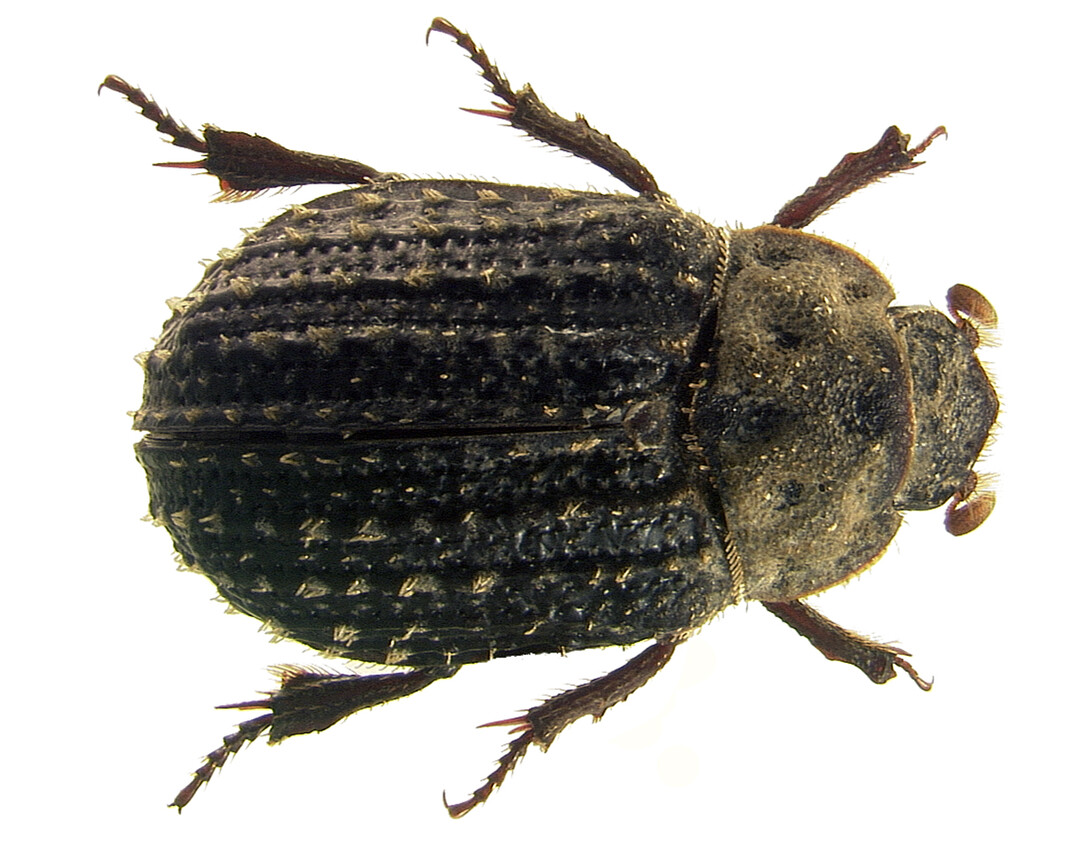
After more than 40 years, an overlooked species of hide beetle is finally getting its due.
Brett Ratcliffe, professor of entomology and curator at the University of Nebraska State Museum, described the new beetle species Trox paulseni in a peer-reviewed article published May 13.
Ratcliffe named the beetle in recognition of M.J. Paulsen, who discovered the species and is collection manager for the museum’s Division of Entomology.
“We had several specimens of the new species in our collections dating from as far back as 1973, but they went unrecognized as being different from a similar-looking species from Nebraska,” Ratcliffe said.
That changed in fall 2015, when Paulsen began examining specimens of the genus Trox that he had collected from dried coyote scat in Nebraska. Realizing that some of those specimens differed from the already-classified species Trox hamatus, Paulsen re-examined the museum’s extensive collections and ventured back into the field to gather additional specimens.
Trox paulseni belongs to the family Trogidae, which consists of beetles characterized by a bumpy, grayish-brown appearance that helps them avoid detection by predators. The beetles typically scavenge the dry remains of dead animals. Their proclivity for feeding on skin, hair and feathers gave rise to the common name “hide beetles.”
Ratcliffe credited Paulsen with discerning subtle differences in the hind legs, reproductive organs and scales of T. paulseni and T. hamatus.
“‘Discovery consists of seeing what everybody has seen and thinking what nobody has thought,’” said Ratcliffe, quoting Nobel Prize-winning biochemist Albert Szent-Gyorgyi.
The entomologists donated specimens of T. paulseni to The Natural History Museum (London), The Canadian Museum of Nature, The Florida State Collections of Arthropods, and the University of Kansas’ Snow Entomological Museum.
Ratcliffe’s study, “Trox Paulseni (Coleoptera: Trogidae), a New Species from Nebraska and Kansas, USA,” appeared in the journal Insecta Mundi.







